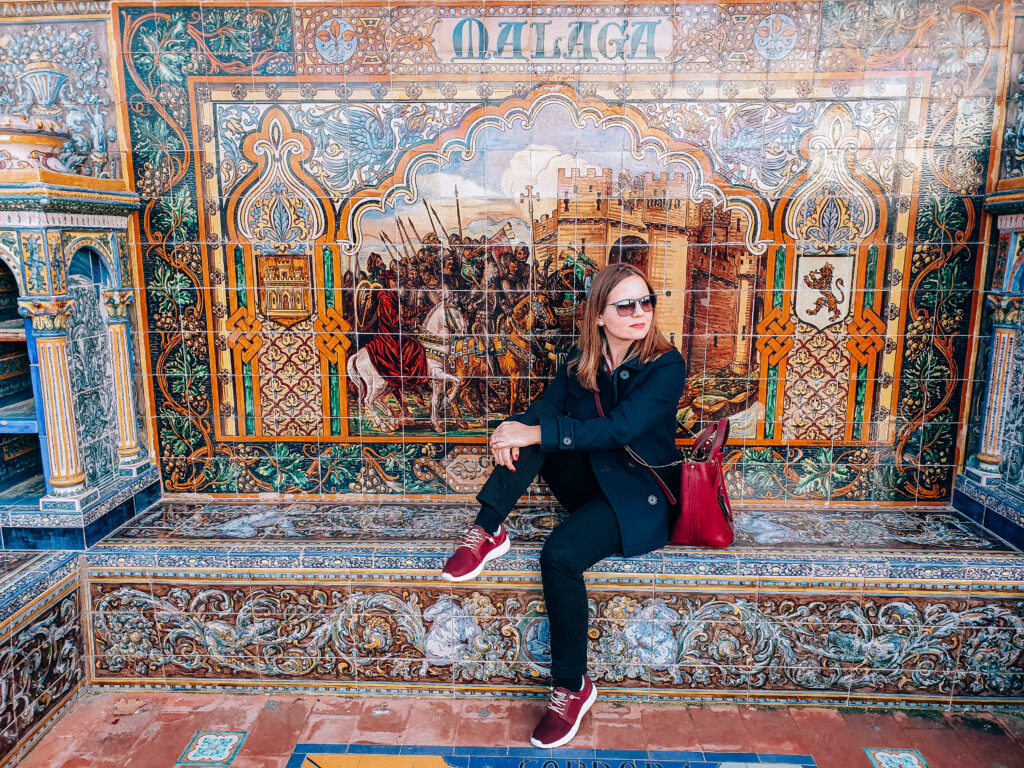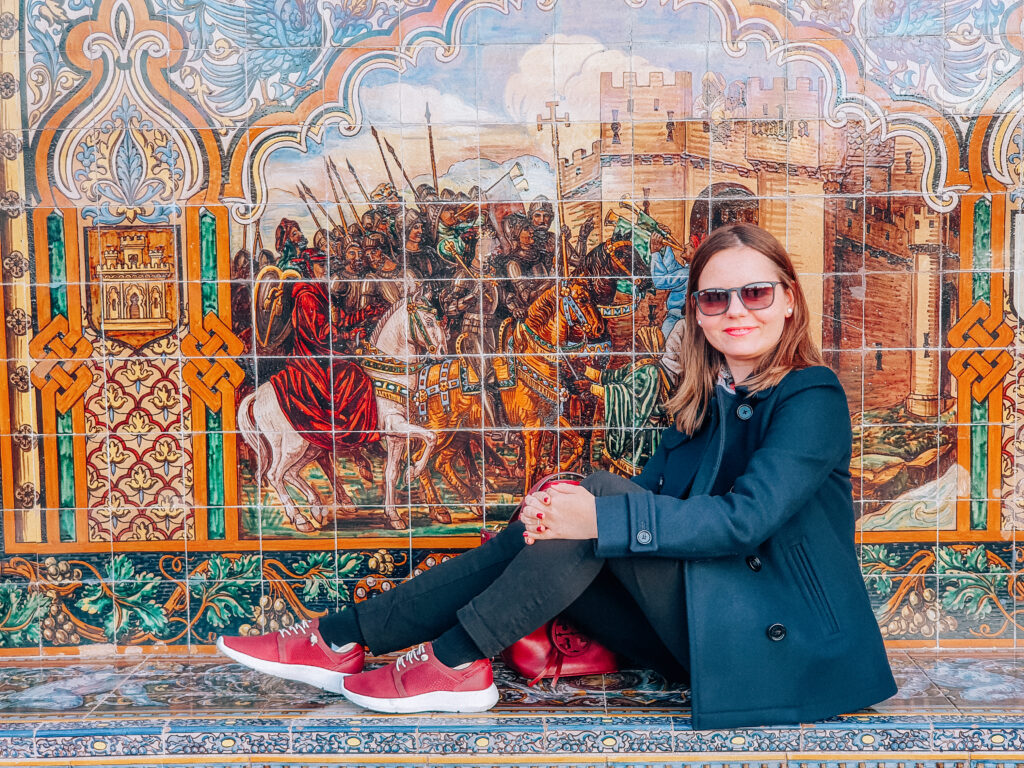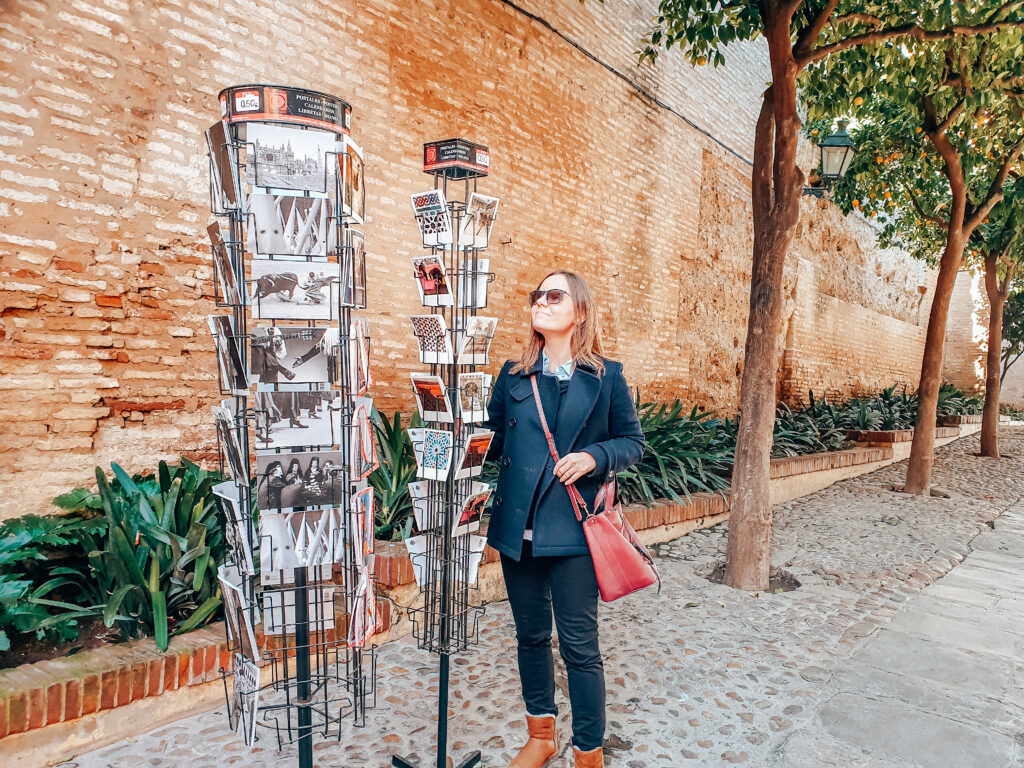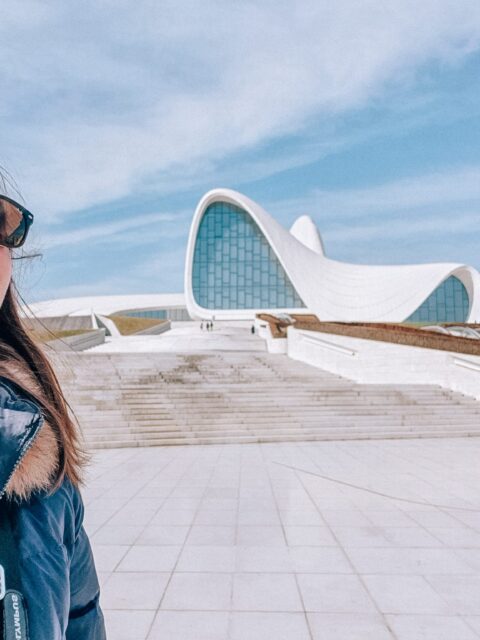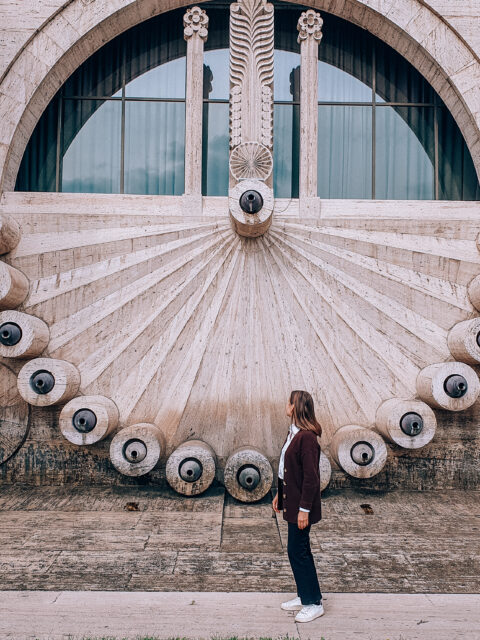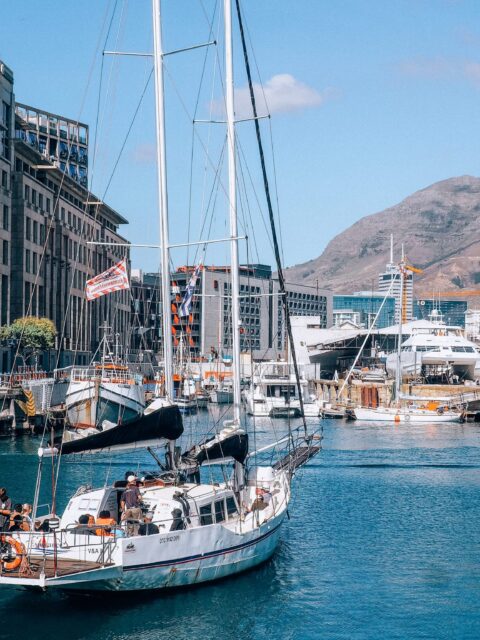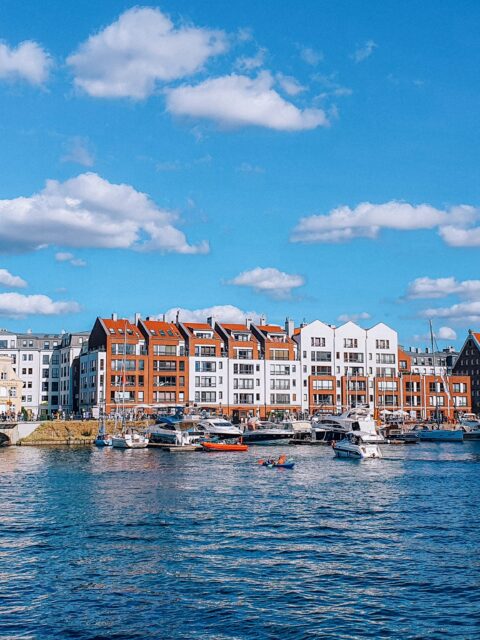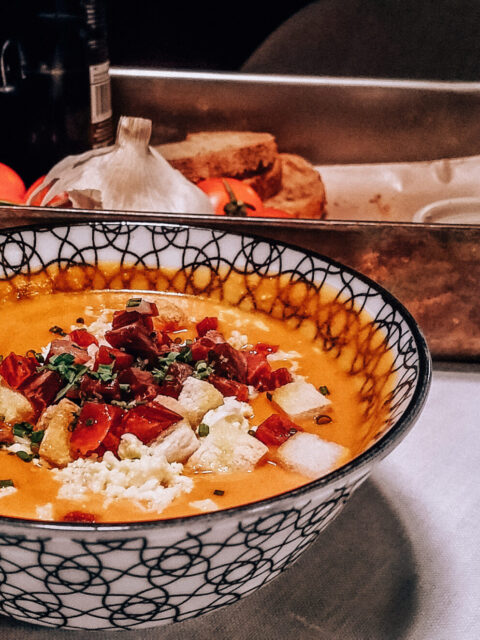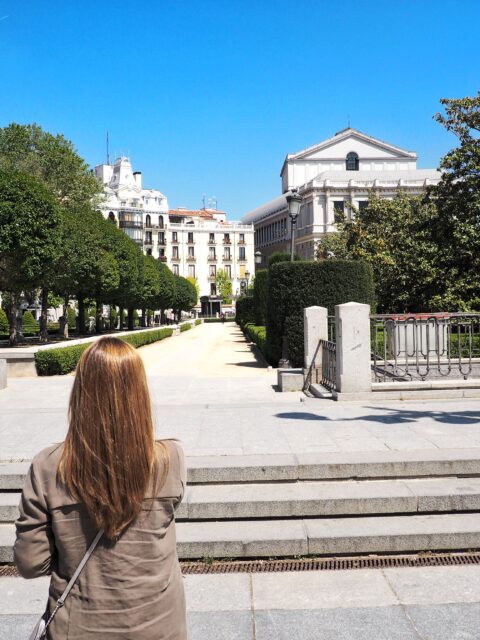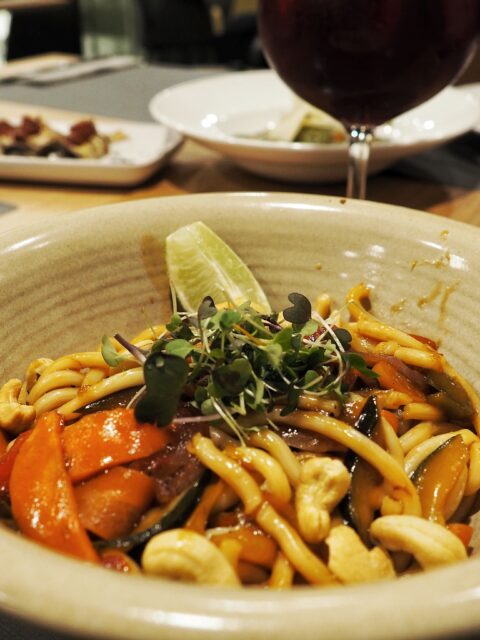A quick guide to Seville: what to see and do on a city break
Seville is one of the most beautiful cities in Spain and it is a perfect destination for a weekend city break. Whether you’re strolling through its historic streets, savoring its mouthwatering cuisine, or marveling at its awe-inspiring landmarks, this captivating city promises an unforgettable weekend getaway. Join us as we explore the best of Seville and uncover the secrets of this enchanting destination.
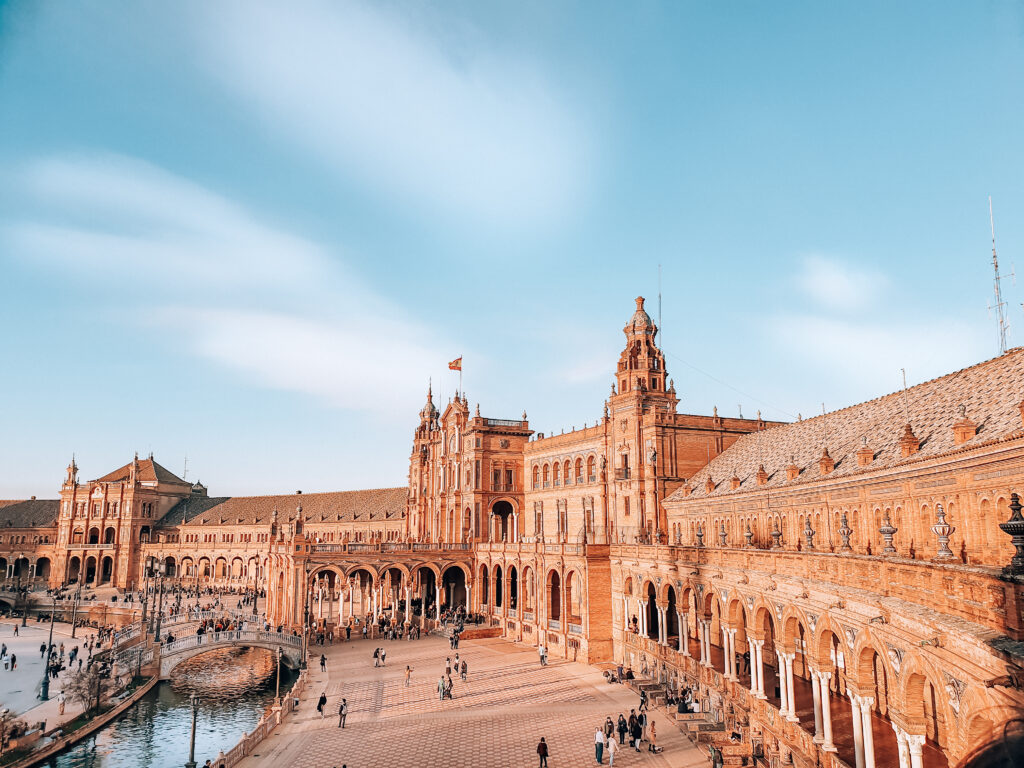
Use my favourite travel resources to plan your dream trips
- Booking.com for searching best prices on accommodation.
- Discover Cars is a great website as they search both local and international car hire services, so you can choose the best deal for yourself. Make sure though, that the company has a good reputation and reviews.
- Get Your Guide is my place to go for searching and booking tours and excursions, especially when I travel solo.
- World Nomads travel insurance. I like them because they have quite extensive coverage of different activities.
- Jack’s Flight Club is a service that can save you hundreds of dollars on flights, it works especially well in Europe.
- Trivago where you can search and save on hotels.
- Go City is a perfect site for booking bucket list experiences and attractions all in one to avoid paying for multiple tickets. Easy and saves money.
- Trip Advisor– amazing for good quality recommendations.
- Skyscanner is a perfect website for searching flight routes and comparing prices.
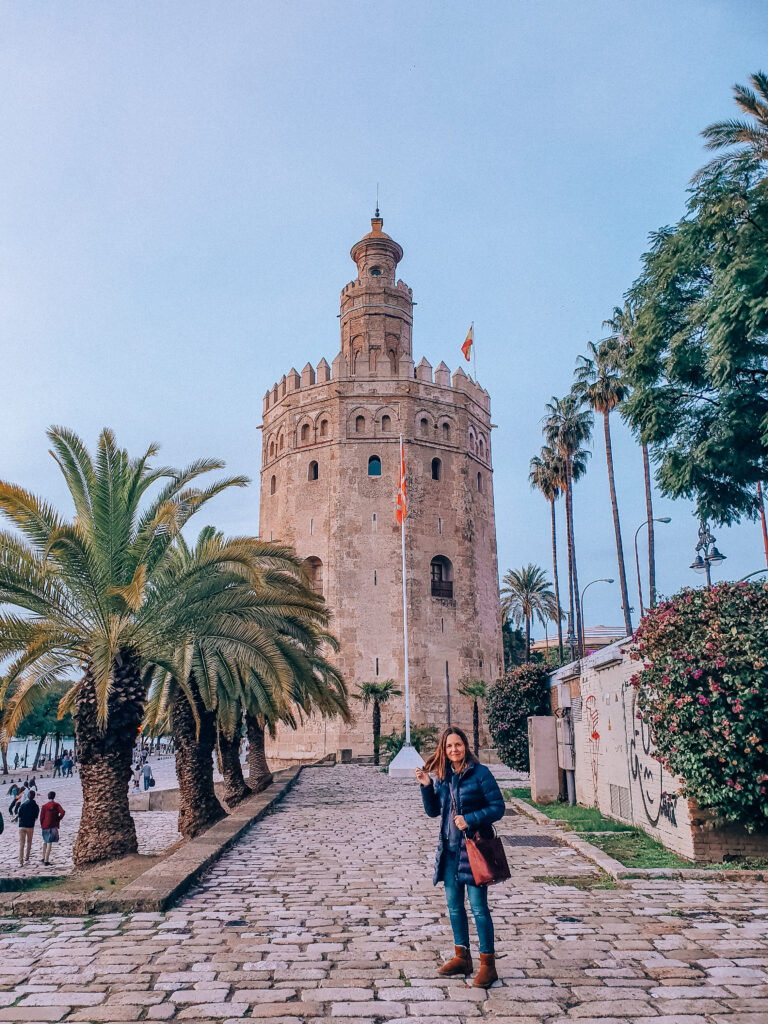
When to go to Seville
The best time to visit Seville is during the spring (March to May) and autumn (September to November) months, when the weather is mild and pleasant, making it ideal for exploring the city’s outdoor attractions and wandering its charming streets. During these seasons, you’ll also find fewer crowds, allowing you to fully immerse yourself in Seville’s rich culture and vibrant atmosphere. Additionally, springtime in Seville brings the famous Feria de Abril, a week-long celebration of Andalusian culture featuring flamenco dancing, bullfighting, and colorful parades, while autumn offers mild temperatures perfect for enjoying leisurely walks along the river and sampling the city’s delicious cuisine.
I visited Seville twice: once in January and once in July. While January was fairly pleasant, July was so scorching hot that staying outside during the day was barely possible, so I’d advice to avoid the summer months.
See also:
Highlights of a road trip through Galicia, Spain.
Spain for foodies. 10 dishes you must try while in Spain.
10 best vegetarian restaurants in Madrid
5 best places to eat chocolate con churros in Madrid
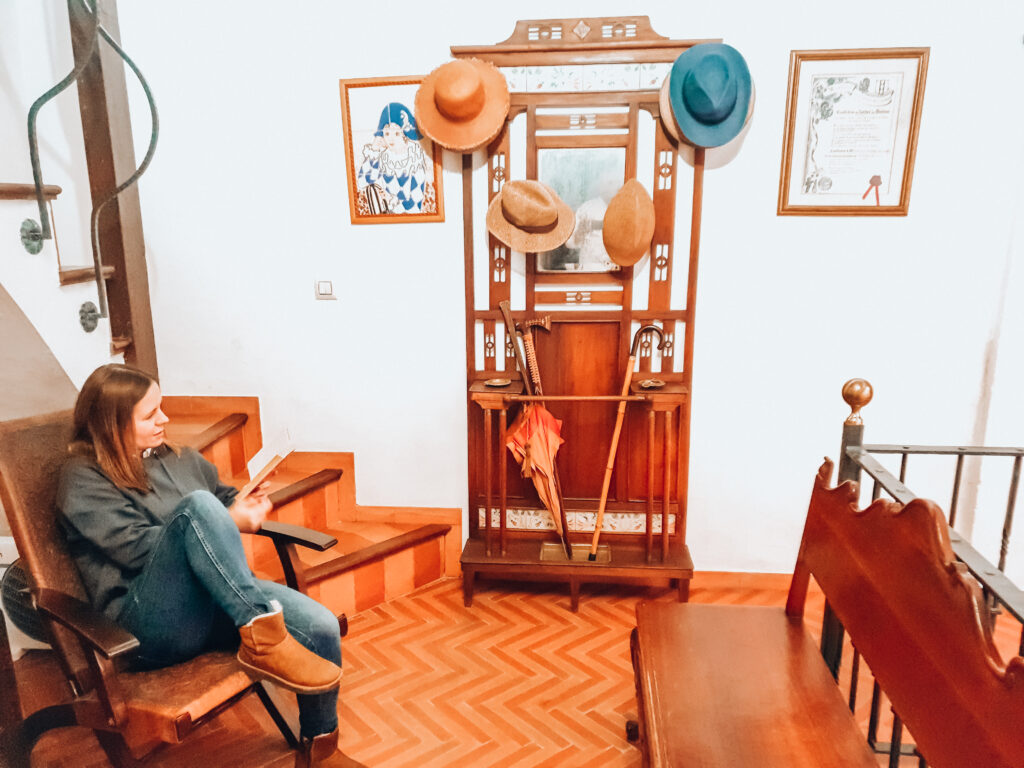
Where to stay in Seville
- If You Have a Car: Consider lodging outside the city center to avoid the challenges of navigating and parking. Even if booking suggests on-site parking, spaces may be limited.
- Without a Car: Opt for accommodations in the city center, such as near Puente de Isabel II in Triana. Proximity to a bus stop from the airport, like those listed on TUSSAM’s website, is convenient.
Best hotels in Seville
There are many beautiful hotels in Seville, from suites to boutique hotels to total luxury. Take your time to search and choose the best option for you. Have a look at these few charming places:
Top tip: If you plan visiting more places in Andalusia, consider renting a car as there are many hidden gems and the public transportation is not always that convenient. You get search for some good offers here.
Getting Around: In the city center, explore on foot. While buses and trams are available, the distances between attractions are often walkable. Visit the TUSSAM website for public transportation information and consider using their app.
City Pass: Evaluate the offerings of city passes, although they might not be exceptionally attractive. Check options like hop-on-hop-off buses on Seville City Guide.
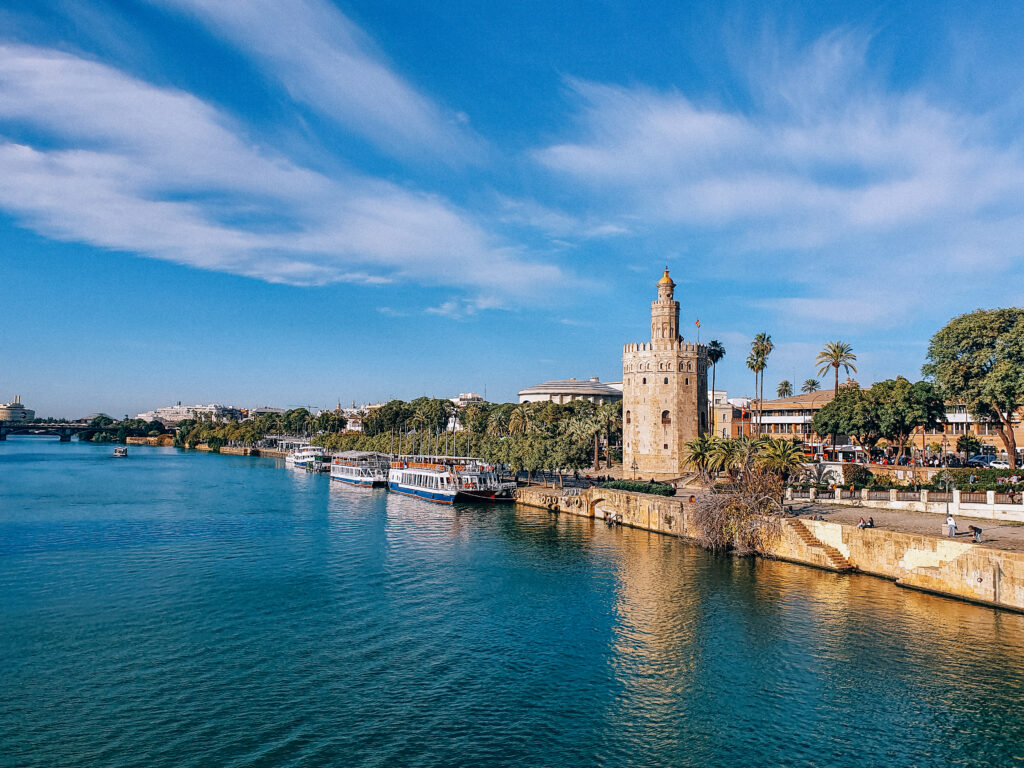
What and where to eat in Seville
Seville is an amazing place to try some traditional dishes from the region. Here are a few restaurants that offer the best experience:
- El Rinconcillo– Calle Gerona, 40, 41003 Sevilla. It’s a bar established in 1670, definitely worth a visit.
- El Pintón– Calle Francos, 42, 41004 Sevilla. A beautiful, modern restaurant with delicious food.
- La Chunga– Calle Arjona, 13, 41001 Sevilla. It serves tapas dishes with a modern accent.
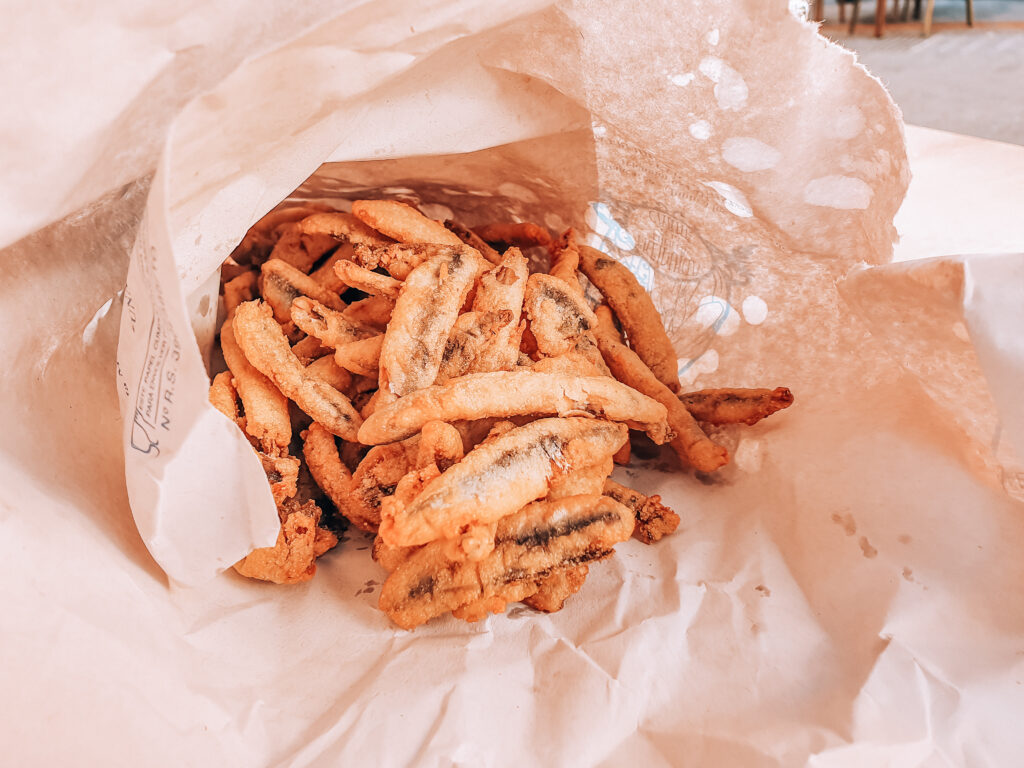
Food to try:
- Salmorejo– it is acold soup, similar to gazpacho but thicker. You can get a salmorejo recipe here (it’s my favourite Spanish soup).
- Cazon de Adobo- marinated fried fish
- Pringa (or montadito de pringa)– it’s a sandwich of crusty bread filled with meats, like roast beef or pork, alongside cured sausages like chorizo and morcilla, accompanied by beef or pork fat that has been slow-cooked for numerous hours until the meat becomes tender and effortlessly falls apart.
- Carrillada de cerdo– pork cheeks
- Vino de naranja– orange wone
- Espinacas con garbanzos– chickpeas with spinach
- Solomillo al whisky– the most tender meat cooked in whisky
Puchero– stew made with chicken, pork, vegetables, chickpeas, noodles and some other things sometimes
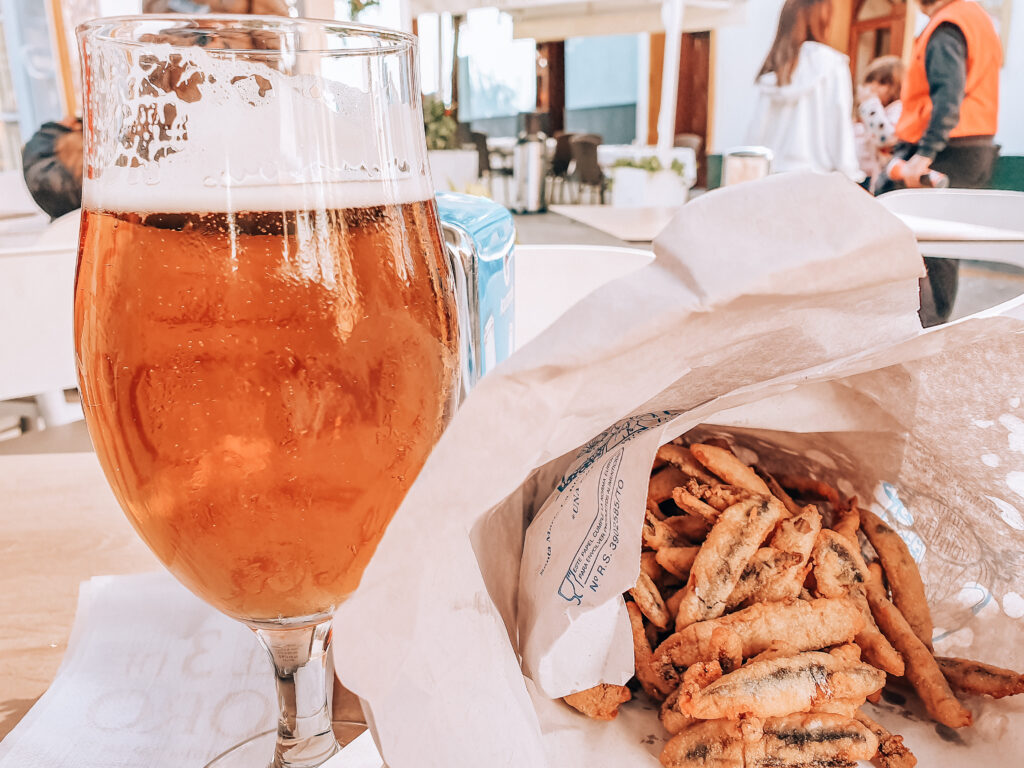
Paid attractions in Seville
Alcazar
This historic royal palace is so stunning that you don’t want to miss it. Alcazar was originally a fort, built in 913. It showcases a mix of Christian and Mudéjar architecture and has been rebuilt several times since then.
Purchase tickets online in advance. Arrive 40 minutes early, and have your ID. For such a popular place to visit in Seville, it’s worth booking a skip the line entrance.
-
- Tip: Mondays offer free entry in the afternoon, but book online weeks ahead.
Cathedral
This is one of the largest cathedrals in the world and a truly impressive one. Now belonging to UNESCO, it is surely a place not to miss in Seville. And do you know what is the coolest thing? You can find there a tomb of Christopher Columbus.
You can buy the tickets on-site or online. During my trip in winter the queue was quite long, so usually opt for skip the line online tickets to popular attractions.
-
-
- Combo Ticket: Includes Giralda tower and free entry to nearby El Salvador church.
- Time: Allow approximately 1 hour for the visit.
-
Palacio de las Dueñas
Dating back to the 15th century, Palacio Dueñas stands as a historical gem, once the illustrious residence of the Duke of Alba. Adorned with stunning landscaped gardens, intricate tile work, and ornate courtyards, the palace exudes timeless elegance.
In spring, vibrant Bougainvillea vines breathe life into the patios, while Moorish-inspired carvings and arched doorways add to its allure. Renowned as one of the world’s great gardens, the palace boasts a rich variety of plants.
It is slightly away from the center, reducing tourist crowds.
Cost: Around 12 euros; duration about 1 hour.
Flamenco Show at Teatro de Flamenco Triana
There is no better place to see a real flamenco show than Seville. It has been nor added to UNESCO heritage list. If you go in April (an event called Feria de Abril), you will have a chance to see a massive transformation of the streets of Seville with flamenco spectacle, all-night partying and food.
Book your flamenco show here. This specific tour received over 5 thousand 5-star reviews:
House of Pilate (La Casa de Pilatos)
It is a beautiful place to visit, comparable to Palacio de las Dueñas. Constructed in the early 16th century by the dukes of Tarifa, this splendid architectural marvel blends Spanish Mudejar and Italian Renaissance influences, drawing inspiration from Pontius Pilot’s estate. Casa de Pilatos is known as one of the city’s most magnificent mansions, the palace, often compared to a miniature Alcázar, continues to stand as the permanent residence of the Dukes of Medinaceli.
- Cost: Around 10 euros. Book the visit to La Casa de Pilatos here.
The Metropol Parasol: Setas de Sevilla
You can admire ‘the mashroom’ from below and skip the 15 euro entrance fee. However, it might be quite interesting to get a guided tour in this interesting construction.
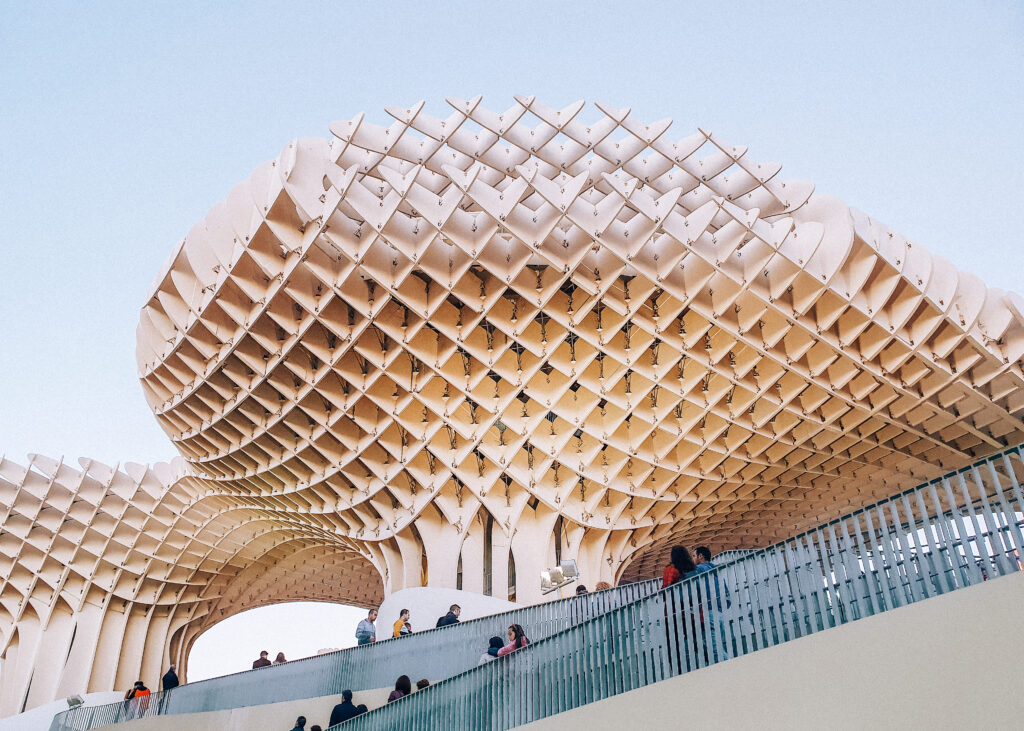
Golden Tower (Torre del Oro)
This charming and photogenic tower is a must during the trip in Seville. It is an Arabic structure and it got the name of golden due to being covered in gold tiles in the past. It is a symbol of Seville, so take your time to enjoy a stroll nearby overlooking the river.
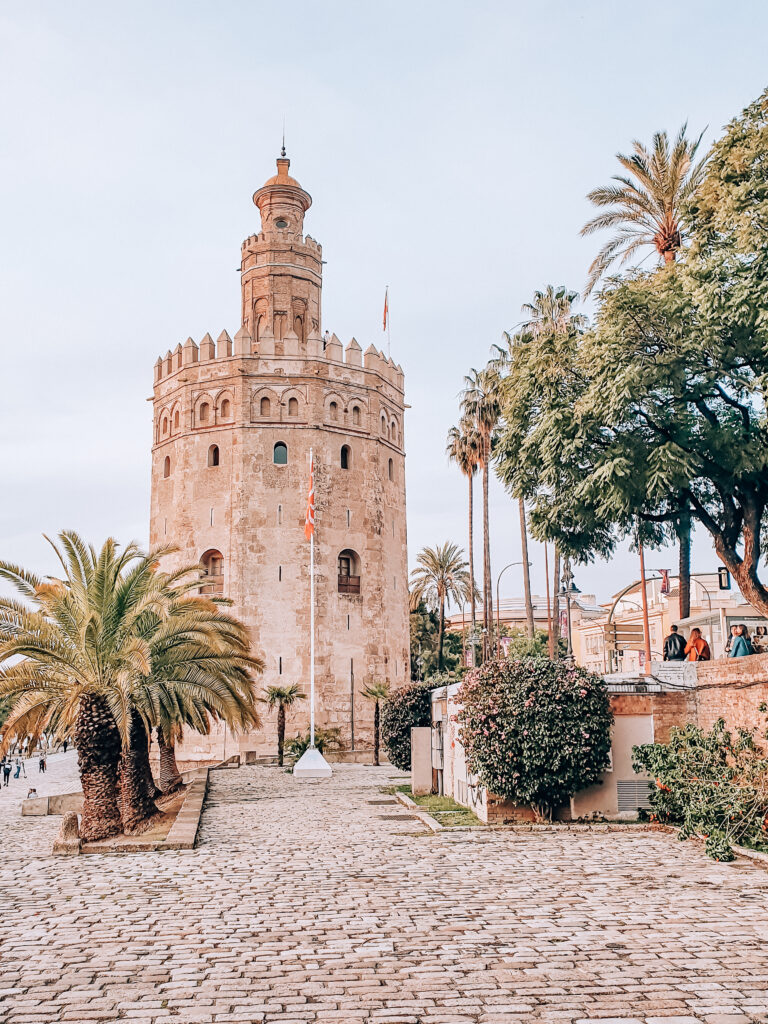
Free attractions in Seville
Plaza de España
Plaza de España is the most recognizable landmark in Seville. A must-visit, especially on sunny days. Ideal for photography and relaxation.
-
- Highlight: You may encounter musicians singing beautiful Spanish songs on the steps.
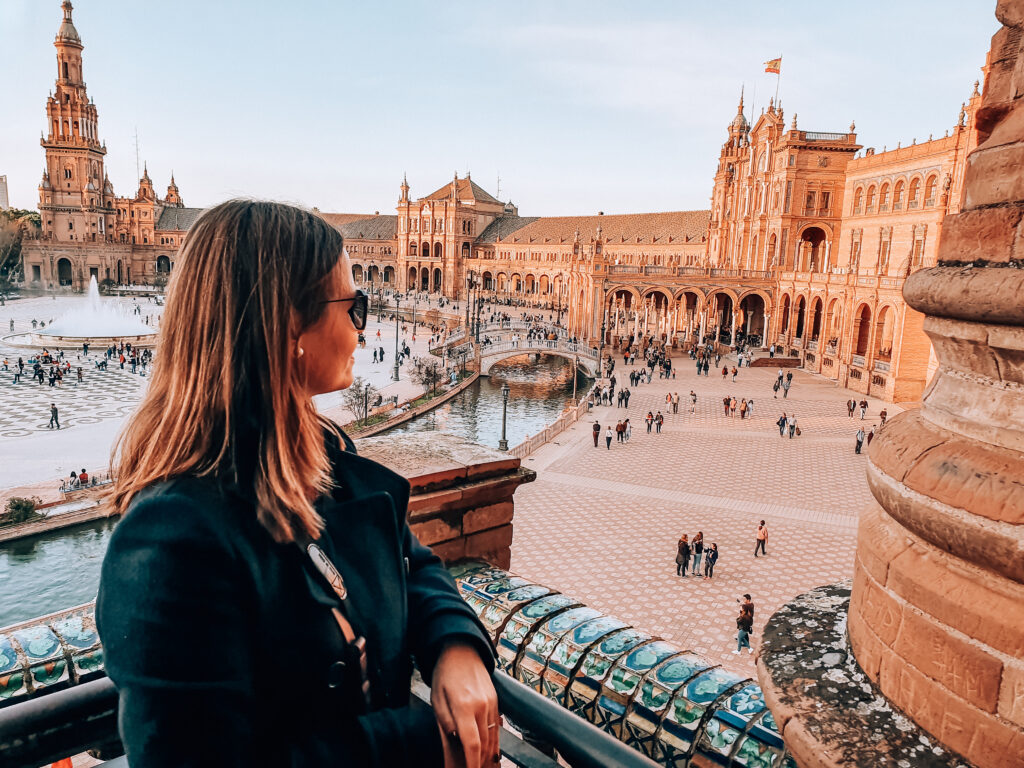
Maria Luisa Park and Other Parks
It is a massive green oasis in the city, a perfect place to escape and relax. Combine it together with a visit to Plaza de Espana.
Military Historical Museum
The Military Historical Museum is on Plaza de España. While it is not a must-visit, it’s free with interesting exhibits like a gas mask for horses. If you have the time, it’s worth a look.
Mercado de Triana
A classic Spanish market, ideal for buying local specialties as souvenirs as there are over 80 different stalls with wide variety of products. There is even a cooking school there. In my opinion, local markets are the best to start immersing yourself in the culture and observe the people.
Inner Courtyards
Visit the inner courtyards that are typical for the Andalusian architecture in Seville. Many buildings have them and they are so pretty.
Archivo de Indias
Not directly related to India; a museum on geographical explorations. It was established in 1785 by Carlos III, the Archive of the Indies was designed to consolidate documents pertaining to the Spanish colonies in the Americas, referred to as the Indies. This initiative aimed to centralize records related to the overseas Empire, serving as a reminder of Columbus’ initial misconception upon reaching the Americas, believing he had arrived in India.
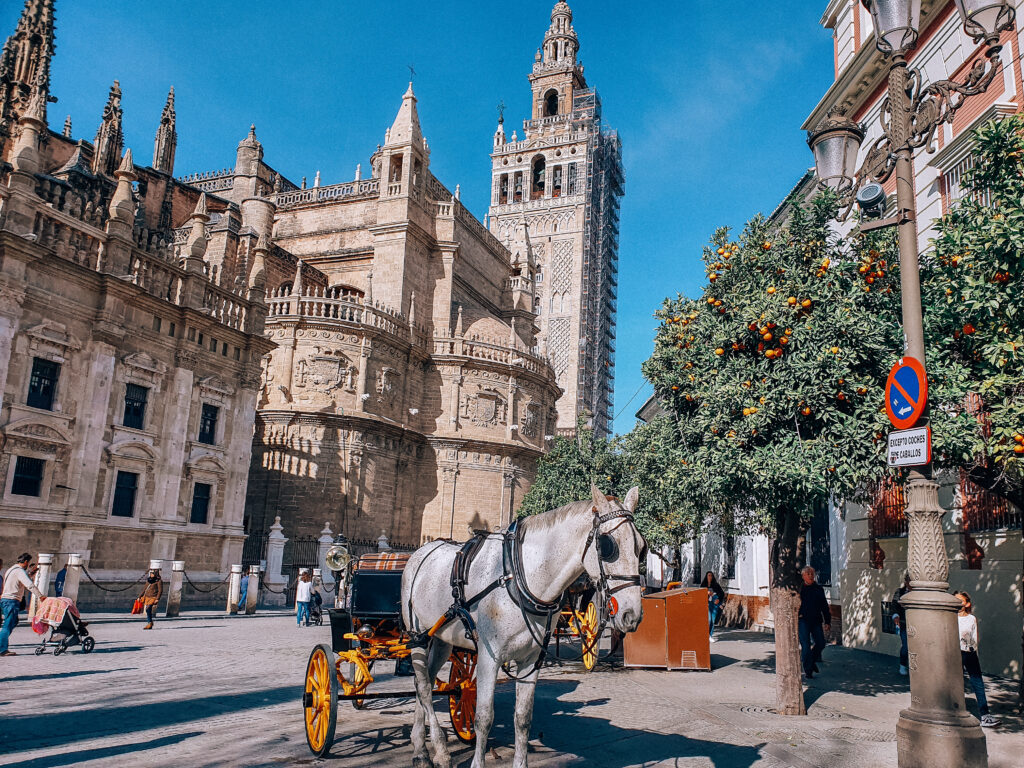
Discover the best things to do in Seville
Did you like the post? Pin it for later:
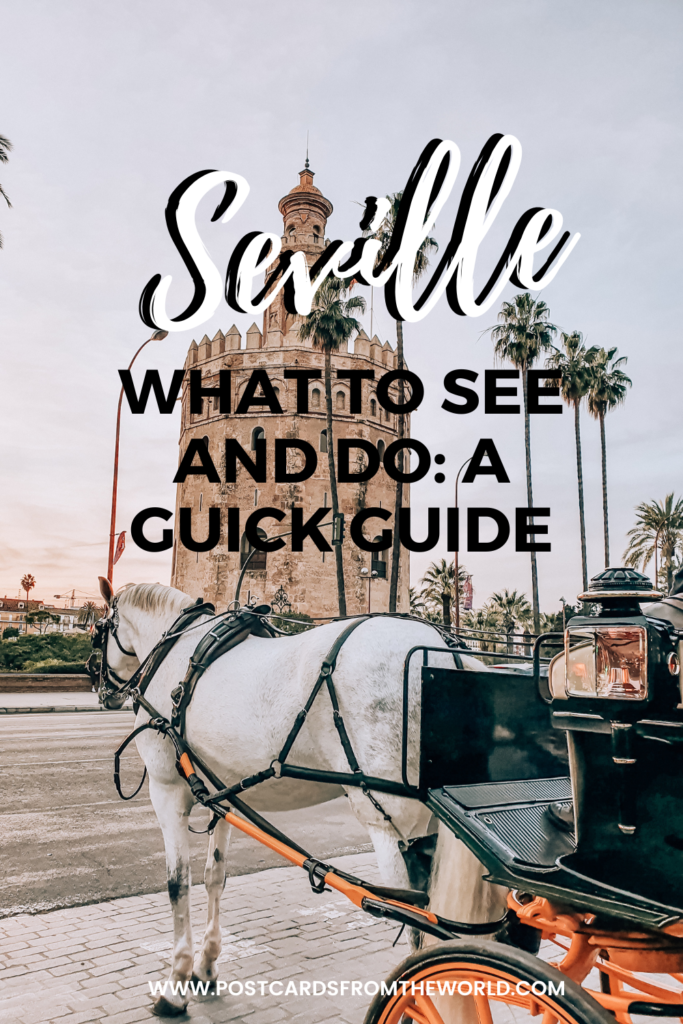
Please note that this post included affiliate links, when you decide to purchase anything through these links I get a small commission at NO extra cost to you, it helps me to keep running this blog! I only promote products and services I use or would use myself. All images are the property of Postcards from the World and cannot be used without permission.


